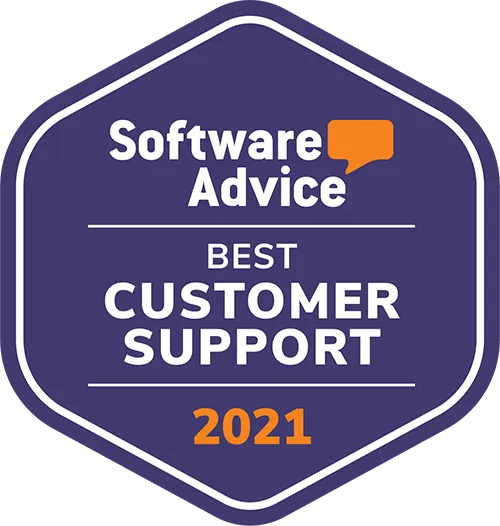It wasn’t a hard choice to select SmartSurvey. Not only did they understand what we were looking to achieve right from the start, they presented a solution that represented everything we needed.
Linear vs. Non-Linear Surveys
Linear vs. Non-Linear Surveys


Linear and non-linear surveys, what’s the difference between them?
Everyday we see thousands of surveys created and most are a fairly straightforward linear path. But for many of our public sector customers, we see surveys or consultations that are particularly complex, and these lend themselves to a non-linear format.
Both types of survey serve different purposes—creating a different experience for respondents—but the outcome Is still the same - ensuring that the information you gather is both relevant and insightful.
On this page we explore the difference between linear and non-linear surveys and in which scenarios it might be appropriate to start thinking about using a non-linear approach. We also look as some examples.
What are linear surveys
Linear surveys take respondents on a journey that follows a specified order. Each question follows the next in a sequence. Respondents progress step-by-step, moving through the survey from start to finish. This method is ideal when the order of questions is important, or you need to guide respondents through a specific sequence of topics.
In this structured format, every question is answered before moving onto the next. This ensures that respondents provide the necessary information before advancing. Linear surveys also allow the use of Skip Logic, a powerful feature that enables respondents to be directed to different sections based on their answers, which makes it possible to streamline the process and focus on what’s most relevant to each participant.
What are non-linear surveys
Non-linear surveys offer a very different experience. Instead of following a pre-determined path, respondents are presented with a contents page at the beginning of the survey. From here, they can choose which sections to engage with, deciding the order in which they answer the questions. This functionality is especially beneficial for longer surveys, where not every section is applicable to all respondents.
Non-linear surveys give respondents greater control over their experience. They select the sections that matter most to them, allowing for a more personalised approach. After completing a section, they return to the contents page, ready to choose the next part of the survey. This method not only respects the respondent’s time but also encourages more thoughtful participation.
The contents page can be more than just a simple list. It can be an engaging introduction, enriched with images, videos, or other media to capture interest and provide context. Required questions still hold their importance—needing to be completed before the survey can be submitted—ensuring that the key information is collected before the survey ends.
What type of surveys use a non-linear format?
Non-linear surveys are particularly well-suited for a variety of consultations, widely used by the public sector across different levels, from local councils to Central Government as well as regulatory bodies. The use of a Citizen Engagement platform such as our own Smart CE will make non-linear surveys simpler and more practical to run.
Below we look at a range of examples where the non-linear survey format is particularly effective.
Policy and legislation
Gathering public input on new or revised laws, enabling respondents to focus on sections that directly impact them.
Use case: Non-linear surveys allow participants to skip irrelevant legislative sections and concentrate on the policies that directly impact their community or sector, resulting in more targeted feedback.
Statutory notices
Engaging with stakeholders on public notices, where they can address the most relevant aspects.
Use case: With a non-linear format, respondents can bypass general notices and zero in on specific statutory information that affects their business or daily life, improving response accuracy.
Spatial planning
Involving communities in land use and development projects, allowing participants to concentrate on specific areas of interest.
Use case: Residents can choose to comment on only those aspects of a spatial plan that affect their neighbourhood or property, ignoring broader issues that don’t concern them.
Traffic regulation
Consulting on Traffic Regulation Orders (TROs), road network upgrades, and active travel projects, where respondents can select topics of personal concern.
Use case: A non-linear survey format lets users select and respond to specific traffic regulation proposals that impact their commute or local roads, avoiding unnecessary sections.
Local plans
Seeking feedback on local development initiatives, with the flexibility to comment on particular aspects like housing, transportation, or environmental issues.
Use case: Individuals can opt to provide feedback only on specific elements of a local plan, such as housing developments or green space preservation, while skipping sections unrelated to their interests.
Licensing and permitting
Gathering opinions on licensing or permit applications, focusing on the sections pertinent to different groups.
Use case: Non-linear surveys allow businesses or residents to focus their input on specific types of licenses or permits that they are directly applying for or are impacted by, avoiding general topics.
City-wide transport plans
Engaging the public on large-scale transport initiatives, such as electric vehicle infrastructure and major rail developments, allowing for focused responses on specific areas.
Use case: Survey participants can concentrate their feedback on particular elements of a transport plan, such as proposed bike lanes in their area or a new train station, while skipping sections on city-wide changes that don't affect them.
Regulatory processes and decisions
Consulting on various regulatory matters, from consumer protection to national food standards, giving participants the freedom to address issues that affect them directly.
Use case: Stakeholders can engage with specific regulatory issues that directly influence their business or lifestyle, such as changes to food safety standards or consumer rights, while bypassing unrelated regulations.
In these scenarios, non-linear surveys become not just useful but essential. They take sprawling, multifaceted issues and make them accessible and highly relevant to the respondent. Participants are not overwhelmed; they’re empowered. They engage with what's pertinent, and only that, resulting in responses that are sharp, relevant, and invaluable.
FAQs: exploring survey structures
Q: Why would I choose a linear survey?
A: Linear surveys are perfect when you need to guide respondents through a specific sequence of questions, ensuring they follow a consistent path and that all necessary information is gathered in the intended order.
Q: What types of surveys work best with a non-linear structure?
A: Non-linear surveys are ideal for longer, more complex surveys where not every section applies to all respondents. They are well-suited for surveys where flexibility and user choice are key.
Q: Can I include required questions in a non-linear survey?
A: Absolutely. Required questions can still be used effectively in a non-linear survey, ensuring they are completed before respondents can submit their responses.
Q: How can I make a non-linear survey more engaging?
A: You can enrich the contents page with multimedia elements like images, videos, or graphics. This not only provides context but also makes the survey more visually appealing and engaging.
Q: What if a respondent doesn’t complete all sections of a non-linear survey?
A: Respondents are free to submit the survey after completing the sections that are relevant to them. This approach respects their time and focuses the survey on the most pertinent data.
How are we different?
UK based
Your data will be stored and processed here in the UK for your peace of mind.
Fanatical support
We pride ourselves on going above and beyond for our customers, providing expert advice and support whenever you need it.
You're in safe hands
Our secure platform and robust data protection measures ensure your data is safe and secure with us. We are ISO27001 and Cyber Essentials Plus certified.
We're human
We understand the importance of personal interaction, which is why we offer a human touch alongside our cutting-edge technology.
Accessibility matters
We're committed to making our surveys accessible to everyone, with a range of features to support those with disabilities.
Unlimited responses
With no limits on the number of responses you can collect, you can be sure your survey will reach as many people as possible without it being cost prohibitive.

Don’t just take our word for it
Over 500,000 users have registered to use SmartSurvey.


We couldn't be happier with SmartSurvey, we love its functionality and flexibility. This means we have been able to use one survey tool across many parts of the business.








Get in touch
We are ISO27001 certified, registered under the Data Protection Act and fully compliant with EU Privacy Laws.
Access to a knowledgeable account manager for personal assistance for when you most need it.
Our friendly design team is on hand to assist with any bespoke design and custom development requests.
We succeed if you succeed. Our goal is to help you carry out effective research and we’re here to help you achieve that.
